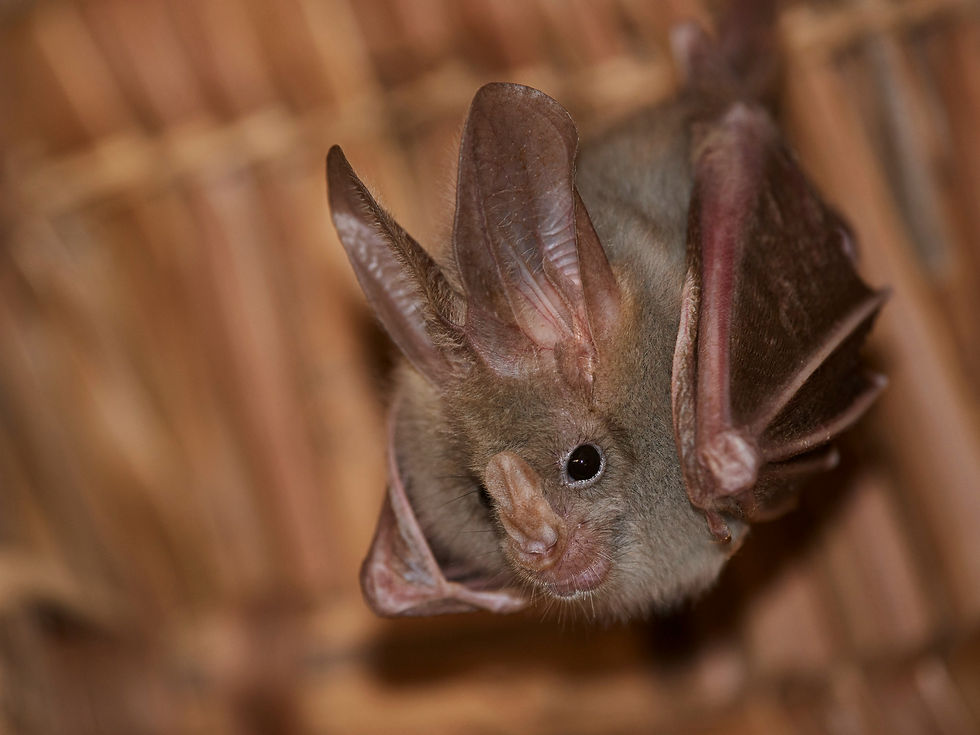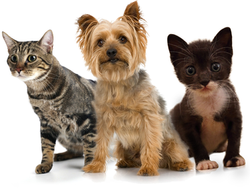Why Do Cats Have That Weird Little Flap on Their Ears? The Fun and Factual Scoop on “Henry’s Pocket”
- ER Kent

- Jul 24
- 3 min read
If you've ever been giving your kitty some well-earned ear scritches and noticed a mysterious little flap on the outer part of her ear, you're not alone. That teeny-tiny fold has puzzled cat lovers, scientists, and probably a few cats themselves for centuries. It even has a name fit for a proper gentleman: Henry’s pocket. But why is it there, and who on earth is Henry?
Let’s dig into this feline ear enigma—with whiskers twitching and tails high.

What Exactly Is Henry’s Pocket?
First things first, this isn’t a spot to stash treats or secret messages from the cat council (tempting as that thought is). Officially, it’s called the cutaneous marginal pouch. It’s a small, skin-lined flap found on the lower, outer edge of a cat’s ear—though dogs, bats, and some other mammals have them too.
While not all cats have super noticeable Henry’s pockets, most do, especially if they’re short-haired. You can gently feel for it next time your fur baby is relaxing. It’s soft, slightly foldy, and totally harmless.
According to National Geographic, scientists aren’t 100% sure what purpose it serves, but they do have some pawsitively interesting theories.

So... Who Was Henry?
Ah, the age-old question! The short answer? We have no idea. There’s no known zoologist or scientist named Henry who claimed credit for discovering this tiny fold. The term “Henry’s pocket” is more of a colloquial nickname than a scientific designation, much like calling your cat “Muffin” when her real name is Persephone.
Some believe it may have originated in veterinary circles as a fun way to reference something that didn’t yet have a well-known function. And honestly, who doesn’t want a body part named after them? Go, Henry.

A Built-In Hearing Aid?
Here’s where it gets really interesting.
Cats are natural-born hunters, with ears designed to move like tiny radar dishes. They can rotate their ears independently—up to 180 degrees—and pick up ultrasonic sounds that rodents make, which are completely inaudible to humans. Seriously, your cat hears the mouse in the wall before the mouse hears itself.
One theory about Henry’s pocket is that it helps cats fine-tune these high-frequency sounds by reducing interference from lower-frequency noise around them. Think of it as a kind of acoustic filter.
ScienceAlert explains that the pouch may help funnel sound waves deeper into the ear canal, especially when a cat’s ear is angled. It could allow the ear to detect subtle changes in sound frequency during a hunt.
In other words, Henry’s pocket might be your cat’s secret weapon for becoming a living, purring satellite dish.

It's Not Just for Cats!
Cats aren't the only animals to sport these mysterious pouches. Mental Floss points out that foxes, bats, and even some dogs have similar features. In all of these animals, the theory is the same: Henry’s pocket helps with directional hearing, especially for prey animals or predators that rely on stealth.
So next time you're admiring your kitty’s ears, remember that you're looking at a high-tech survival tool handed down by nature.

When Should You Worry?
Here’s where our fun curiosity turns briefly to caution.
Henry’s pocket is completely normal and doesn’t require special care—but it can collect dirt, wax, or even uninvited guests like mites. If your cat starts scratching at her ear a lot, or you notice redness, swelling, or an odd smell, it might be time to consult your vet.
PetMD notes that ear mites and infections can sometimes hide out in the folds of the ear, including the pouch, though they’re usually part of a larger ear problem.
So while you don’t need to clean it regularly, it’s a good idea to check in during your cat’s usual grooming or snuggle sessions.

A Final Thought From the Cat
If your cat could speak, she’d probably say, “Why are you poking at my ears again, human? I’m trying to nap in a sunbeam.”
But now you know: that little flap is a marvel of mammalian design—a quiet, curious structure that might just help her stay one pounce ahead of everything around her.
Whether it’s filtering sound waves, serving up adorable ear folds, or just adding a bit of anatomical flair, Henry’s pocket is one more reason to appreciate the mysterious beauty of our feline companions.
So go ahead—scratch behind those ears, admire the fold, and give a little nod to Henry, whoever he was.
And if you’re still curious? Scroll through this vet’s deep-dive into feline ears for more science, more cats, and more fun.








Comments